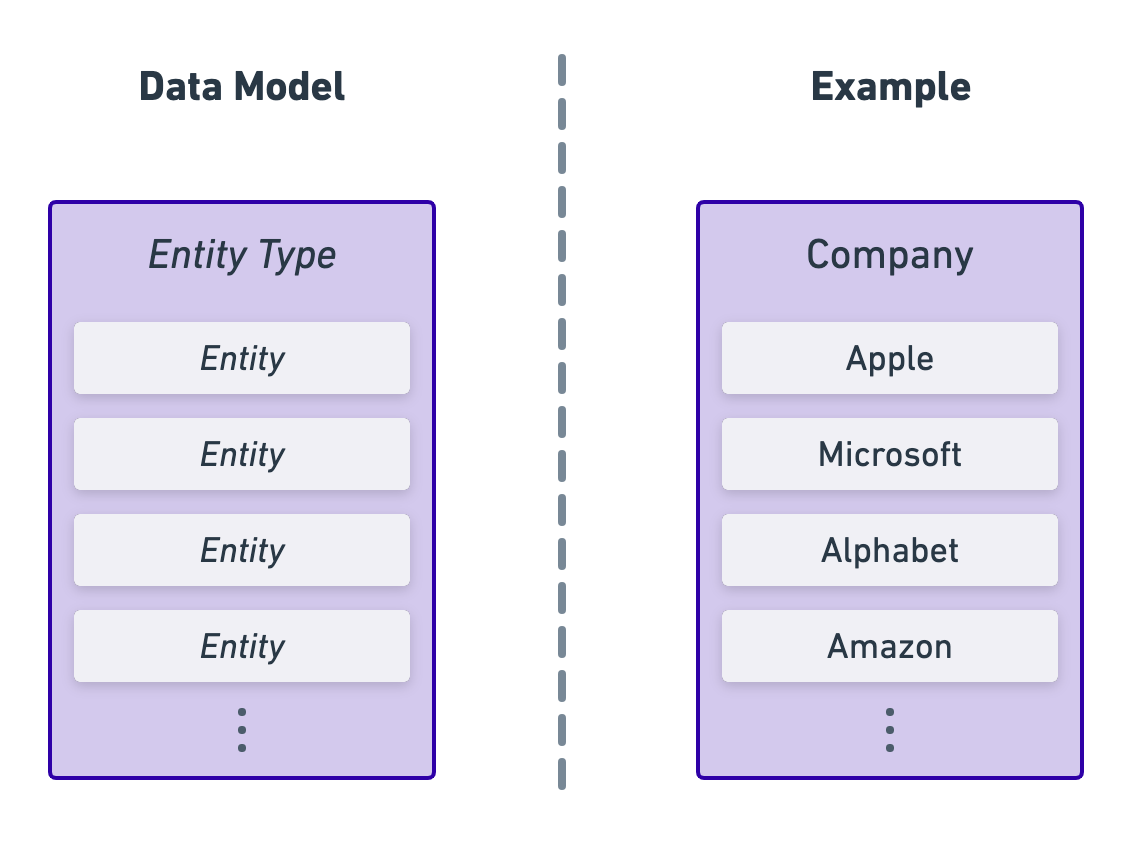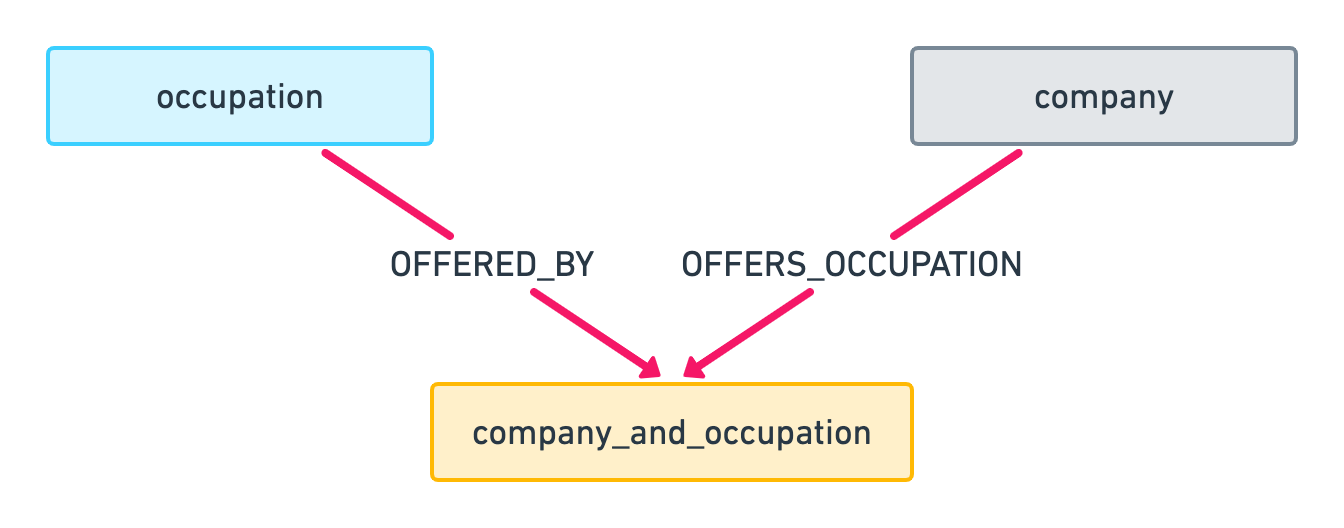Entities
Entity types and entities allow you to associate time series data to a particular entity such as a company, brand, region, etc.

Entity Types
An entity type is a group of entities having similar real-world meaning, for instance company, web domain, brand, or region. Every entity has a single entity type.
Exabel provides a set of global entity types, in addition you can create entity types in your own namespace. The complete list of available entity types can be retrieved using List entity types. Some of the global types are:
| Entity type | Resource name | Customers can create entities | Entities can be listed |
|---|---|---|---|
| company | entityTypes/company | no | no |
| country | entityTypes/country | no | yes |
| currency | entityTypes/currency | no | yes |
| listing | entityTypes/listing | no | no |
| regional | entityTypes/regional | no | no |
| security | entityTypes/security | no | no |
| rbics | entityTypes/rbics | no | yes |
A regional is a group of listings (of the same security) with the same trading currency in the same region. The other entity types should be self-explanatory.
Some entity types are marked as associative, representing a many-to-many relationship in the Data API graph. Entities of associative entity types will normally not show in search results, but they act as connections in order to connect a signal to a pair of entities.
Entities
An entity is an instance of any one of the entity types, such as a company or a brand. The full resource name for an entity is entityTypes/ns.type/entities/ns.name. For example, the company entity referring to Apple, Inc. has the resource name entityTypes/company/entities/F_000C7F-E. (Note that the identifier does not specify any namespace since the entity belongs to the global namespace.)
A large number of entities are created and managed by Exabel. Those entities cover all publicly listed companies on a large number of exchanges, along with the corresponding securities and listings. Some of those entity types are too large to be listed, but they can be searched for.
Of the built-in entity types, all except for the brand entity type are read-only, meaning that new entities can only be added by Exabel. Customers can add entities with the brand entity type, and any entity type that has been created in their namespace.
Associative entities
You may define a custom entity type (created by you, in your namespace) to be associative. These are useful when you have data that is defined by the combination of 2 or more entities - you can create associative entities to hold this data, and connect the associative entity to the actual entities.

Associative entities, with the company_and_occupation entity type, connect occupation and company entities
The example above shows company and occupation entities connected via a company_and_occupation associative entity. By doing this, you can import your time series data at the more granular company_and_occupation level, while still retaining the flexibility to aggregate to company or occupation when running analysis in the Exabel platform.
For more detail on this example, see Example 3 from the data modelling guide.
Updated 21 days ago